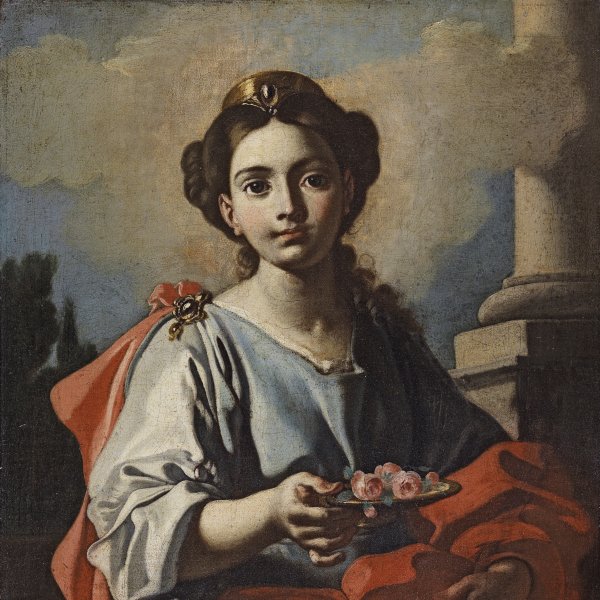Giacomo Cestaro (attributed to)
This excellent artist, who trained with Francesco Solimena (died 1747) during the latter years of the painter's career, is characterised by an ample, impetuous brushstroke, even dramatic when he makes the naturalist complexion of his heroines and the chromatic splendour of their attire (Lucrezia, Naples, Salina Collection) stand out against a dark background, in line with a baroque revival in the naturalist interpretation of Mattia Preti. At times, the notes of skilfully represented verisimilitude, compared with the more stereotypical compositions made for his clerical clients, place Cestaro, with his evocative power, almost at the level of Traversi, as can be seen from his other Cleopatra, in the Museo di Capodimonte, and the magnificent portraits, formerly in the Gallerie Salomon Agustoni Algranti in Milan, representing, respectively, Vittorio Amadeo III of Savoy in Full Armour and Maria Antonieta of Bourbon, Queen of Spain. These are chiaristi masterpieces of an austere, almost threatening realism, overwhelmed by a wide number of accessories (fabrics, curtains), half way between the style of Solimena and De Mura's own extremely "purified" genre. If, on the one hand, Cestaro's paintings clearly show his relationship with Domenico Mondo, another of Solimena's followers, with whom he shares the neo-baroque brightness in his compositions and the marked pictoricism, Cestaro probably reaches the degree of naturalism which constitutes the best part of his figurative legacy thanks to the example set by Giuseppe Bonito between the fourth and fifth decades of the century.
The biography of Cestaro, a difficult artist as he is scarcely documented-at least with regard to the works which have reached us-can be reconstructed mainly from the year 1757, when the painter was already forty years of age. Between that year and 1759 he painted on canvas (The Martyrdom of Saint James, Saint Philip Destroying the Idol with Words, for the presbytery), and did some frescoes, (The Four Evangelists, in the lunettes of the dome); the Assumption of the Virgin, on the vault) for the Neapolitan church of Santi Filippo e Giacomo. The fresco with the Glory of the Virgin, in the church of the Assunta in Bagnoli Irpino, the painter's birthplace, is from 1761, and the oils (Annunciation and Virgin of the Rosary and Saints) for the church of the Annunziata in Angri date from 1764.
In 1770, Cestaro worked on the frescoes (walls, two lunettes and vault) of the Berio chapel in the church of San Giorgio dei Genovesi in Naples, while working at the same time on other interventions at Villa Campolieto in Ercolano.
At the same time, Cestaro maintained a prolonged relationship with the Accademia del Disegno Napoletana, where he taught in the years when it was directed by De Mura and Bonito, hoping, in vain, to become deputy-director. In 1772, Luigi Vanvitelli included Cestaro among the nineteen painters suitable to teach, in acknowledgement for his project to reform the Academia itself. The esteem for this important painter reached such height that Vanvitelli himself-who defined him "a great expert in fresco painting"-wished to include him among the most eminent painters in the Kingdom, with a view to the decoration of the Reggia in Caserta.
Roberto Contini





